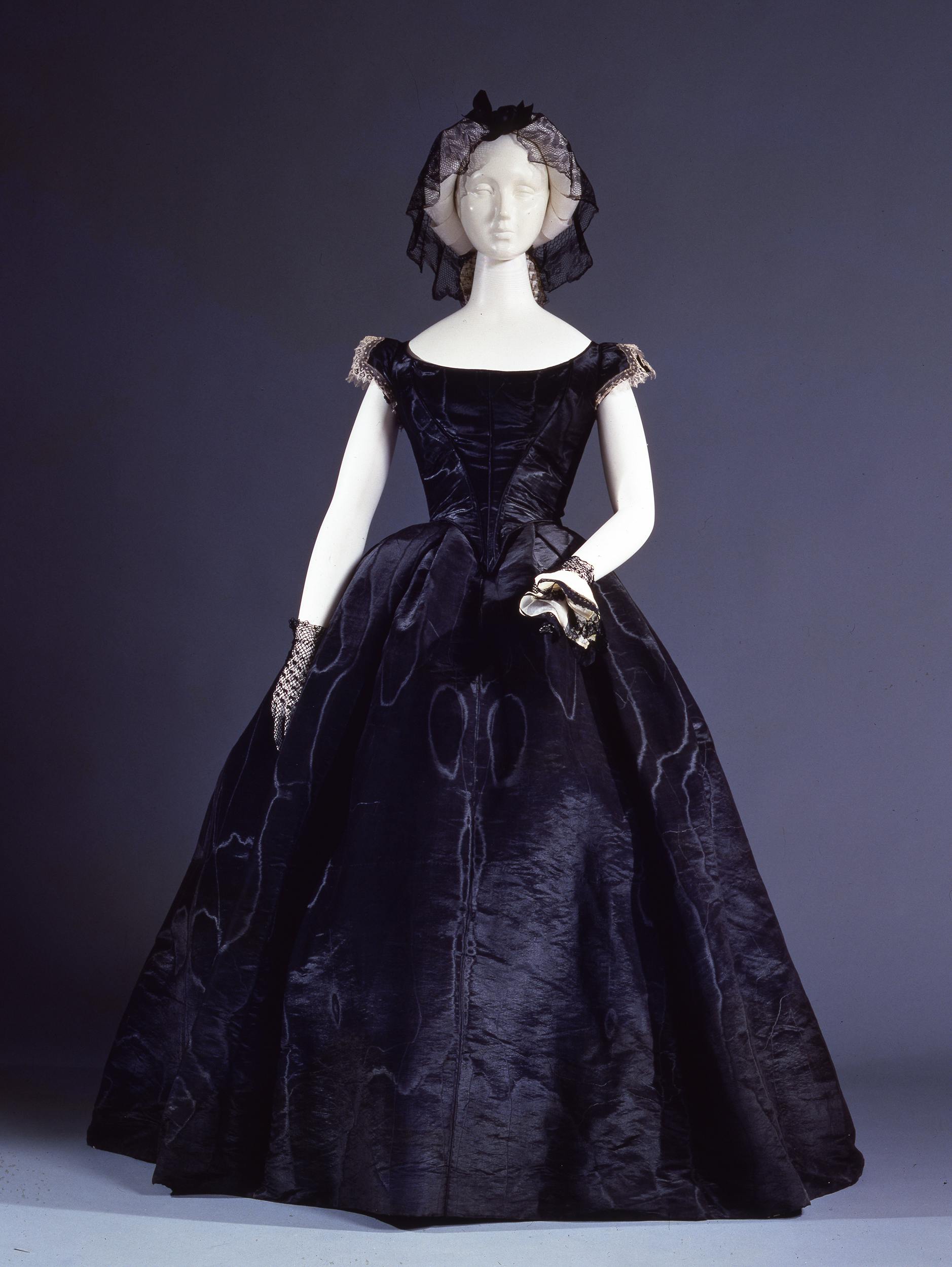Transformation gown
English manufacture
This three-piece gown - skirt, evening bodice and daytime bodice - probably belonged to Emilia Tedeschi, wife of the English painter John Henry Bradley, and can be dated presumably to 1861. In that period, following the death of Prince Albert, the husband of Queen Victoria, it became mandatory to appear at the English court, even on formal occasions, strictly dressed in black. The two bodices allowed the ensemble to be transformed depending on the occasion. The evening bodice features a wide round neckline and very short cap sleeves, while the one for daytime has high neckline and long sleeves. In the 1890s, both day bodice and skirt underwent a profound transformation, probably following the death of the owner's husband in 1890. They were adapted to the new fashion so that they could be used for mourning. At the time, it was not unusual to modify a thirty-year-old dress in order to reuse it. The value of a dress depended largely on the fabric used, mainly fine and expensive silks, and modifying it according to fashion, thus adapting it to new lines and making sure to continue using the fabric, was a common practice even among the upper classes. The wide skirt, which in 1861 was supported by a voluminous crinoline, was tightened by folding the excess fabric inwards in order to fit the new triangular line of the skirts in vogue at the end of the century. The bodice underwent an even more radical transformation. All that remains of the original garment is the torso, which is concealed under a new, ruffled and pleated piece of fabric in black chiffon. The original sleeves, which had been unpicked and ruffled, were transformed into balloons adorning the shoulders, from which descend the new tight sleeves in lilac taffeta covered with transparent black chiffon. It is precisely thanks to the sleeves, which are voluminous on the shoulders and then tightened towards the forearm, that we can date this modification to the 1890s, a decade that was characterised by the volume of the sleeves.
The restoration allowed to bring the skirt back to its original shape, thus recreating the form that the evening dress had in the 1860s. The second bodice, which was for daytime use (not shown in the picture), has preserved the same shape acquired in the 1890s.
Donation by Pia Teresa Mallaby Carmi, Florence.
La Galleria del Costume/5, Centro Di, Firenze, 1993, pp 52-53; Thessy Schoenholzer Nichols, Visti dall'interno taglio e cucito: rimodernare un abito 1890, in Arte Tessile, dicembre 1993, n. 4
